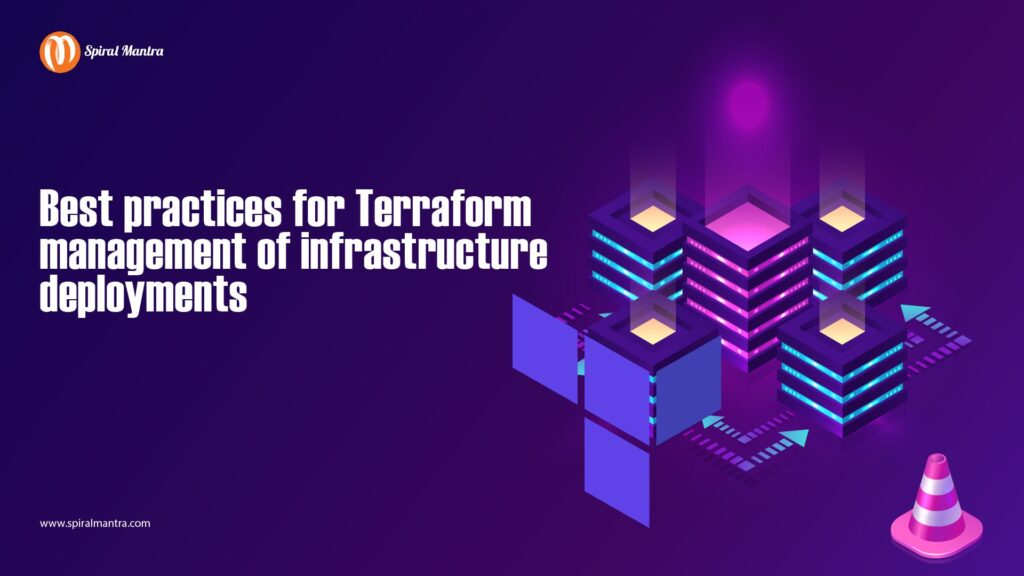Do you want to manage infrastructure with configuration files rather than a graphical user interface? Infrastructure as Code (IaC) tools let you do so. By defining resource configurations that you can version, reuse, and share, IaC enables you to develop, change, and manage your infrastructure in a secure, consistent, and repeatable manner.
HashiCorp gives,
Terraform named, an infrastructure as code technology. This technology helps you to make the information easily comprehensible by specifying the resources and infrastructure in declarative configuration files. It also controls the lifespan of the infrastructure.
Operating technique:
- Scope: Contains a list of the elements of your infrastructure that the project will require.
- Author: Infrastructure configuration written with the help of HashiCorp Configuration Language (HCL).
- Initialize: Terraform requires plugins to operate the infrastructure therefore these plugins are installed.
- Plan: To fit your setup terraform makes adjustments and the outline of these adjustments needs to be checked.
- Apply: The scheduled adjustments should be carried out to produce and alter the resources.
There are various benefits of using Terraform instead of maintaining your infrastructure manually:
- Cloud platform infrastructure can be managed and handled by terraform.
- Human-readable configuration language enables writing infrastructure code more rapidly.
- Monitoring resource changes throughout your deployments becomes possible by Terraform's state.
- Version control can safely cooperate on infrastructure if you can commit your configurations to it.
Terraform helps in making the interaction of plugins known as providers with the cloud platforms and other services through their
Application Programming Interfaces (API). More than 1,000 providers have been built by the HashiCorp and the Terraform community to manage resources on Amazon Web Services (AWS), Azure, Google Cloud Platform (GCP),
Kubernetes, Helm, GitHub, Splunk, and DataDog. Terraform Registry can find providers for many of the platforms and
services that are already in use. In case you are unable to locate the supplier you can write your own.
Terraform practices that manage the infrastructure deployments
There are many practices and techniques that can effectively manage efficient infrastructure deployments. Understanding these points will take your terraform code to the next level.
Segregation of codes
Spreading the code into several folders rather than assembling them in one location is better. Failure to do so can result in the following:
- Extended execution time: Terraform needs to constantly refresh the state for a large number of resources therefore the execution time is extended.
- Diminished impact area: Since errors can be made by humans, spreading your code over several directories will lessen its influence.
- Code Maintainability: Managing a single directory might get burdensome as your infrastructure grows.
Use versioned modules:
To avoid code duplication after proper segregation we can try to use modules as much as possible. The modules can be kept in a different directory inside the same directory. A flawless module cannot be created in a single sitting. There can be situations where switching modules is necessary. Therefore, we should constantly update the version of the modules.
Intelligently using terraform workspaces:
Following points should be considered before using
terraform workspaces:
- There is a very high likelihood that your team will break the Terraform code if they are not proficient with modules.
- Using them to manage multiple types of infrastructure in development and production can be challenging.
Resource naming convention for Terraform:
Resources should always be named as broadly as feasible. As a result, you have the freedom to copy and paste the resource file wherever. Using a variable file to control the environment/application-specific naming convention can be useful in identifying the precise file that has to be changed. The remaining files now function merely as a template that may be added wherever necessary.
Collaboration in Terraform
If you want to work together with your peers on infrastructure then Terraform's remote state backends are a perfect way. You can safely share your state with your peers, give it a stable environment to execute in, and avoid race situations when many individuals make configuration changes at once when you utilise Terraform Cloud.
To suggest infrastructure modifications on its own the cloud may be integrated with Version Control Systems (VCS) such as
GitHub, GitLab, and others. This modification can be done whenever configuration changes are committed to VCS. Managing changes to your infrastructure can be done in the same way as application code by version control that is allowed by this platform.
